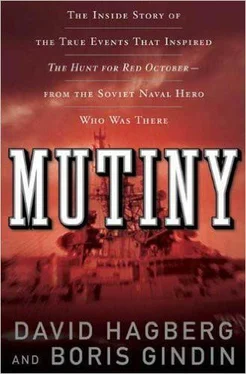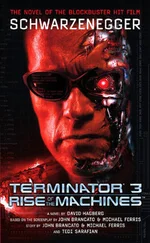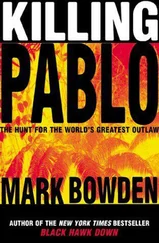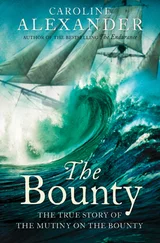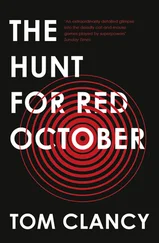I left Russia and I’m no longer bound to keep my promise to the secret police. I’m an American citizen now.
The mutiny was a significant event, and the facts should not be lost to history.
The men and officers who with me opposed the mutiny have had to live with the consequences. Moscow unfairly blamed them, as well as the mutineers, and their lives and careers were irreparably ruined.
With this book I hope finally to set the record straight, to clear their good names and reputations.
1905–07
On the fourteenth of June 1905 the crew of a brand-new Russian battleship that was engaged in a live fire exercise off the Black Sea island of Tendra murdered the captain and most of the officers and took over the ship. This was at a time in Tsarist Russia in which the people were in open rebellion against their government. Fighting was going on in all the major cities in the east. And in Moscow, St. Petersburg, and Odessa workers were on strike.
The ship had taken on a load of rotten meat, crawling with maggots, and the men refused to eat it even after the doctor said it was okay. The captain ordered the crew mustered on deck, where he picked out several of the men to use as examples. He was going to have them shot to death for betraying a direct order.
The first mate ordered the guard to open fire, but he refused and the bloody mutiny began.
She was the battleship Knyaz Potemkin Tavrichesky, of which a famous movie was made in 1925. But hers wasn’t the only navy crew to mutiny during that year and the next two. There was the battleship
Georgiy Pobedonosets, the training ship Prut, the cruisers Ochakov and Pamyat Azova, and the destroyers Svirepy and Skory, among others.
The real reason behind all those mutinies was the same, and it wasn’t rotten meat. It was a rotten government. Change was coming.
What do a handful of men and officers aboard a warship think that they can accomplish against an entire nation, even one in turmoil?
Do they expect that their actions can make a difference?
The mutiny of the battleship Potemkin signaled the beginning of the end for the Tsarist Russian government, just as the mutiny aboard the frigate Storozhevoy signaled the beginning of the end for the Communist Russian government.
It was a rebirth of sorts for the crew, for the ship, and for the nation.
PART 1
RIGA

THE RIVER
The morning of the mutiny the northern winter frost rides heavily on the stiff ocean breezes in the harbor. Not many people are up and about along Eksporta lela Krastmala Street, which runs along Riga’s waterfront on the Daugava River. Yesterday throngs of people lined up to see the ships of the great Soviet navy on parade to honor the fifty-eighth anniversary of the Bolshevik Revolution, but on this chilly predawn all of Riga, it seems, is sleeping.
Moored in the middle of the river are fourteen Soviet warships: submarines, destroyers, cruisers, tenders, and frigates, all in parade formation, all respectful of the law and order, peace and prosperity, that serving the Motherland—the Rodina—guarantees. It’s a brave new world over which lies a morning haze of wood and coal smoke from the chimneys of homes of people lucky enough to find fuel to waste in late fall merely for heat.
Aboard the frigate Storozhevoy, moored practically on top of an Alpha-class submarine, reveille has sounded. It is time for the two hundred men and officers to rise from their slumbers, dress in trousers and telnyaschka, the long-sleeved blue-and-white-striped undershirts that sailors wear no matter the time of year, and muster on deck for exercises. But yesterday was a holiday, and the mood this morning is almost universally one of indifference toward routine, yet there is a strange undercurrent of anticipation that has permeated the ship, though only two men know the reason.
The Storozhevoy is a low-slung, sleek warship that even tied up at his{Russians use he and his for ships.} moorings looks like a greyhound at the starting block, ready at a moments notice to charge forward, to do battle. At over four hundred feet on deck, he is a third longer than a football field, but with a narrow beam of only forty-six feet, flaring bows, a low-slung afterdeck, and midship masts bristling with radar and Electronic Surveillance Measures (ESM) detectors rising seventy-five feet above the water, the ship looks lean and mean. And dangerous.
Down two decks and aft through three sets of watertight doors, open now, and just forward of the engineering spaces, before the midshipmen’s mess, Ordinary Seaman Pavel Fomenko is sound asleep in his bunk while all around him in the cramped, smelly compartment, called a cubrick, his sixteen crewmates are bustling to get dressed and report on deck.
It is 0700, still pitch-black outside. Standing above Seaman Fomenko’s rack is his boss, chief of engineering, Senior Lieutenant Boris Gindin.
At twenty-four, Gindin is a well-trained officer aboard ship, but he’s young and relatively untested. The new men among the seventeen in his gas turbine section do not know him yet. He has a set of ground rules he learned at the academy and on his other postings, but he hasn’t explained himself. He hasn’t proven himself. He will stand up for them and defend them if the need should arise. But he wants to know that they will behave themselves, that they won’t get drunk, that their uniforms will be neat at all times, and, most important, that they will obey orders.
Riga is still asleep. But the crews aboard the other warships moored in the river are coming awake. From here the city’s most famous structure can be seen. It’s the wooden tower of St. Peter’s Church in Vecriga, the old city. Dating back to the fifteenth century, it used to be the tallest wooden building in the world. Even now, rising seventy-two meters above street level, it gives a view all the way out to the Baltic Sea to the northwest. Tourists climb to the top to see the sights, and lovers make the pilgrimage for luck. For the Soviet sailors the tower represents nothing more than another authority figure. It’s always something or someone, towers or officers, looking down on them, ordering them about, sometimes fostering a resentment in a man that can run deep.
Like today.
His crew needs to obey Gindin, but they do not have to know that he comes from nothing more than a middle-class family from Leningrad. Certainly not rich by any standards, certainly not well connected, certainly not favored by the Politburo or the Communist Party.
They don’t have to know he’s a Jew.
Every morning Gindin is up before his men, so that he can make sure they are ready for their mandatory exercises. In the academy, where he learned gas turbine engineering, he was on the weight-lifting team. He is five-feet-nine and stocky, with the round but pleasant face of a Great Russian, obsidian black hair, and blue eyes. It’s obvious that he’s in better physical shape than most of his men, especially Seaman Fomenko, in part because of the luck of the genetic draw but also because Gindin continues to work out and because officers aboard Soviet warships eat much better than enlisted sailors.
Gindin kicks the man’s bunk. “It’s time to get up.”
Fomenko opens one eye and gives his officer a baleful look. He cannot get up with the others. “My father is an alcoholic and I have a hangover, so you see I cannot get up.”
Читать дальше
